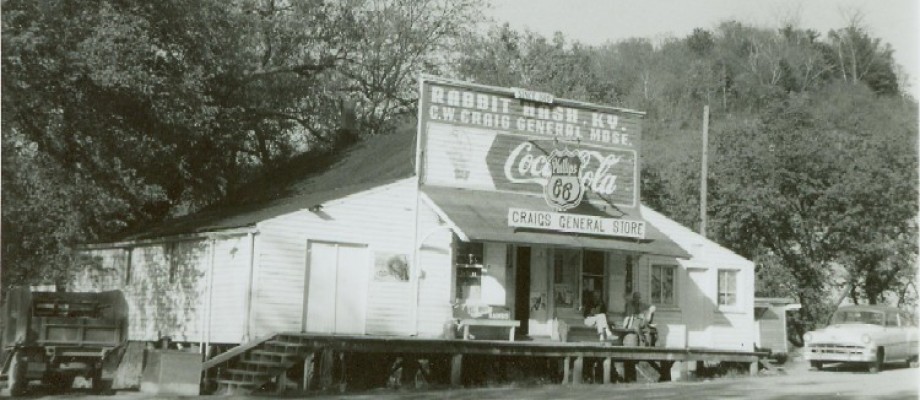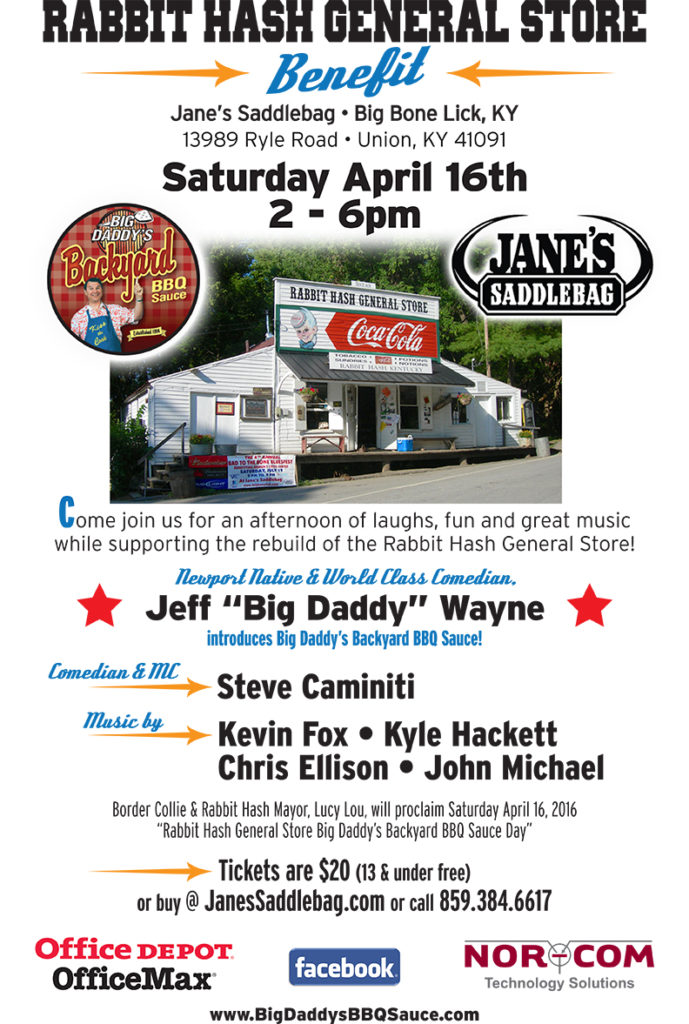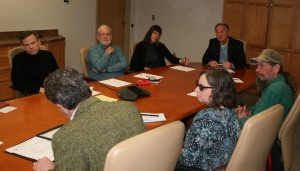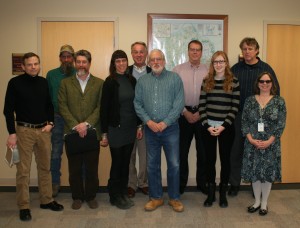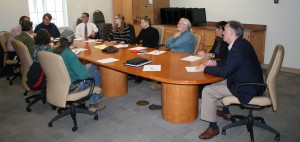Flood Mud
by Don Clare
As we were disassembling the remains of the Rabbit Hash General Store and de-nailing and cleaning up
the various shapes and sizes of the re-usable pieces of wood that survived, a common finding soon
made itself apparent and ‘clear as mud.’ There was evidence of dusty dirt or sticky mud on almost every
piece of wood, depending on the current weather of the day. I thought it would be fun to pick this
finding apart and figure out where all this mud came from, historically speaking.
Ever since those early industrious fellows got together in 1831 to build the very first section of the store
we all knew and loved, it was visited quite frequently by La Belle Riviere (French for ‘the beautiful river’).
The very first visitation and deposit of river to the 1831 store building was on February 18, 1832 when
the Ohio reached a level of 64 feet, 9 ¾ inches (as recorded on that date in Salmon P. Chase’s personal
journal in Cincinnati). When the river reaches between 63 and 64 feet, the water would begin seeping
into the building and covering the floor boards of the (formerly) current general store building, so the 64
foot level in 1832 was at least waist high in the building. This first mud invasion occurred before the
store was even a full year old. Recall that when it was originally built, the structure was built on the
ground, so at 64 feet the water was well into the structure. In our earliest picture of the Rabbit Hash
General Store (taken in 1894 by the premiere historian of that time, Reuben Gold Thwaites, while he
journeyed in a skiff along with a doctor friend, his wife and his young son down the entire 981 mile
length of the Ohio River from Redstone, Pennsylvania to Cairo, Illinois where it entered the Lower
Mississippi) it was still sitting on the ground. Thwaites had actually stopped at Rabbit Hash, posted some
letters in the mail, and took a picture of the building. It looked the same as it did on the day it burned
except that it was sitting at ground level and not up on wooden piers!
Everybody recalls the date 1847, right? That was the date assigned by William H. Nelson for the official
naming of the town. In his booklet “The Buried Treasure: A Rabbit Hash Mystery”, he included “by
request” a piece he had written originally for the Lawrenceburgh Register titled “Rabbit Hash, Kentucky:
The Origin of Its Name.” At that time, Nelson was the editor of both the Lawrenceburgh and the Rising
Sun newspapers. He was also a local school teacher. He married the widow Carlton and lived in the town
of Rabbit Hash, just above the reaches of the Ohio River floods. He attributes the naming to a local
inhabitant by the name of Frank. “He stood somewhat apart, shivering violently, not so much from the
effects of the cold, however, as from the chronic influence on his system of over-indulgence in any and
every kind of alcoholic stimulant that he could buy, beg or borrow.” The day was reported to be
Christmas Day, 1847. “For several days the river had been rising steadily, until now all the houses on the
bank were flooded…” This included the General Store. The flood reportedly crested at 63.7 feet. “It was
a time of considerable hardship and suffering. Snow two feet deep covered the ground, and that
combined with the extreme cold made communication with the outside world extremely uncomfortable
and somewhat hazardous.”
The official recording of Ohio River high waters and flooding actually began in 1858. Before that the
reported levels were somewhat arbitrary but within a reasonable margin of error. According to National
Oceanic and Atmospheric Administration’s (NOAA) National Weather Service, the official flood stages at
Cincinnati had been 45 feet from 1873 to 1893; 50 feet from 1899 to March 31, 1922; and 52 feet from
April1, 1922 to present. From 1858 until 2014 there were a total of 103 times the Ohio surpassed the 52
foot flood stage. January, February and March have been the most common months for floods and April
not as often. There has been one flood recorded in June.
The flood of January 22, 1862 reached an official level of 57 feet, two and one half inches. So that year
it became threateningly close, but did not get into the building. It would be another 21 years before the
next flooding event and this one was very significant. On February 15, 1883 the river crested at 66 feet,
5 inches, which translates to over 6 feet of water and mud in the building. But it held its ground and
survived that inundation. Three hundred sixty four days later, the flood of February 14th 1884 reached
the level of 71.1 feet, making it the biggest flood of the century and perhaps the region’s original St.
Valentine’s Day massacre. Again, the store survived, but how?
At an unrecorded time in the store’s history, the four 12 inch by 14 inch sill logs were anchored to the
ground with iron rods bolted through the logs to the ground. As the subsequent floods eroded the
ground toward the rear of the store into the creek behind it (viz. 1883 and 1884), large locust posts were
installed to prop up the rear of the building. In the 1894 photo, the front of the store still remains on the
ground, but the rear is supported by these posts, and the sills still anchored to the ground. During the
restoration, an archaeologist from the same Gray and Pape Cultural Resource Company who is serving
as our project manager will be doing some testing to see if we can really tie down the dates of those
structure-saving improvements.
Another 23 years later the next major flood recorded a level of 65.2 feet on January 21, 1907. But once
again, the old girl withstood the ravages and recovered from a new layer of Ohio River mud, which
seeped into and hid in the crevices. Then on March 19, of that same year another high water event
came through the front door registering 62.1 feet. Only six years later, the year 1913 also decided on a
double whammy, two major flooding events just 3 months apart. On January 14, 1913 the waters
peaked at 62.2 feet and before the building was hardly given time to recover, that level was trumped by
the April 1, 1913 crest of 69.9 feet. April Fools! Almost as bad as the 1884 model. More erosion and
more locust post piers needed to support the sagging building, this time even the front porch got props.
In our 1817 photograph of the Reverend Twinkle delivering a sermon at the General Store the locust
posts can be seen under the porch and the February 12, 1918 flood was thankfully kept at bay.
The next flood threat waited until March 21, 1933 to seep into the store, leaving its floors warped and a
muddy mess. You may recall in a previous update article that we found a signed and dated tongue-and-
groove flooring board as we were taking up the floor boards for re-use in the renovation. That floor
board was signed by Vernon Smith and dated Sept. 11, 1933, just 6 months after the 1933 flood. Little
did neither Mr. Charlie Craig nor Vernon Smith know what was to come in January of 1937, or they may
have waited to lay a new floor! They certainly must have been elated to have ‘dodged the bullet’ in 1936
when the river reached 60.6 feet and didn’t ruin their new floor.
The ’37 Flood was the ‘Mother of all Floods’, officially cresting at 79.9 feet, but actually between 81 and
82 feet along our stretch of the river. At the time the American Red Cross declared it the greatest
natural disaster in the history of the United States. There are scores of books and publications
concerning this devastating event if you want to learn more. It is hard to believe that in just six months
(July of 1937); the river was a mere 12 feet deep.
The 1940s witnessed two close calls when the river reached 60 feet in 1940 and 60.8 feet in 1943. But
the river will always come back for the things it left behind previously. The General Store took another
big hit in 1945 at a crest of 69.2 feet, almost rivaling the 1884 inundation. This time, though, the last
vehicular ferry boat (The Mildred) was totally destroyed by the accompanying ice. But again, the old gal
fought back the forces of Mother Nature and with the help of her loyal and caring neighbors carried on
her charged role of social clearing house and centerpiece of the community. Then again in 1948 her
unwelcomed visitor reached 64.8 feet. (By comparison for those of you who remember the 1997 flood,
this was just one tenth of a foot higher!)
The 1950s seemed to give the General Store a well deserved rest from the high floodwaters. Another
close call of 61 feet in March of 1955 did nothing more than threaten. This same scenario repeated in
1962. In 1953 the Secretary of the Army approved the construction of a system and series of higher and
more sophisticated locks and dams to replace the older and obsolete low level dams of the 1910s and
1920s. Mackville (McVille) Lock and Dam Number 38 was completed in 1926 in the Belleview/Mackville
neighborhood. In 1962, after the completion of the new Markland Lock and Dam, it was blown up along
with Dams 35, 36 37 and 39, raising the normal river pool from 16 feet to 26 feet in this particular pool.
This rise brought the Ohio a lot closer to the Rabbit Hash General Store. But the new locks and dams had
nothing to do with flood control. They were built to only improve river navigation by creating a series of
pools (or lakes) all the way from Pittsburgh down to Cairo, Illinois which was the entire 981 mile length
of the Ohio River.
But people were mistakenly under the impression that these new locks and dams would put an end to
flooding around here. So in 1964 the Ohio proved that impression dead wrong when she crested at 66.2
feet, again getting over the counters inside the store. Again neighbors all came to the rescue and moved
goods and supplies up the road a short piece (now Rabbit Hash Hill Road) and the store re-opened in an
empty two room house in a matter of two days (just like they did this past Valentine’s Day, moving the
General Store into the Rabbit Hash barn)!
What was to follow that was a 33 year reprieve from flood water getting into the store building. The
Flood of ’97, as it is now affectionately referred to, struck in early March, 1997 and nearly matched the
1948 crest and missed the 1964 crest by only one and a half feet. The year before, the river tantalized
and intimidated area residents, but called off the invasion at 57.3 feet, just enough to get everyone’s
attention.
This may sound strange or weird, but as we were disassembling the walls and the floors of the building
after the fire, I started collecting this left-behind flood mud into plastic sandwich and storage bags, just
for the heck of it. For me, the mud served as a memory of all the stress, tribulations, inundations, bad
luck and bad karma the poor old gal had to suffer over all these years. Now mixed with the mud was
charred wood and ashes. I figure the mud that was under the tongue and groove flooring put down in
1933 was left from the ’37 Flood and those after that. But the mud I scraped out of the original 4 inch by
12 inch floor joists in the central bay section goes all the way back to 1832, almost 185 years ago! So,
just as people keep the ashes of grandma and grandpa, I thought it only fitting to keep the mud and
ashes of the old gal who meant so very much to me for close to forty years!
Stay tuned for further updates as the restoration begins to take shape…
-Don Clare, President
Rabbit Hash Historical Society



